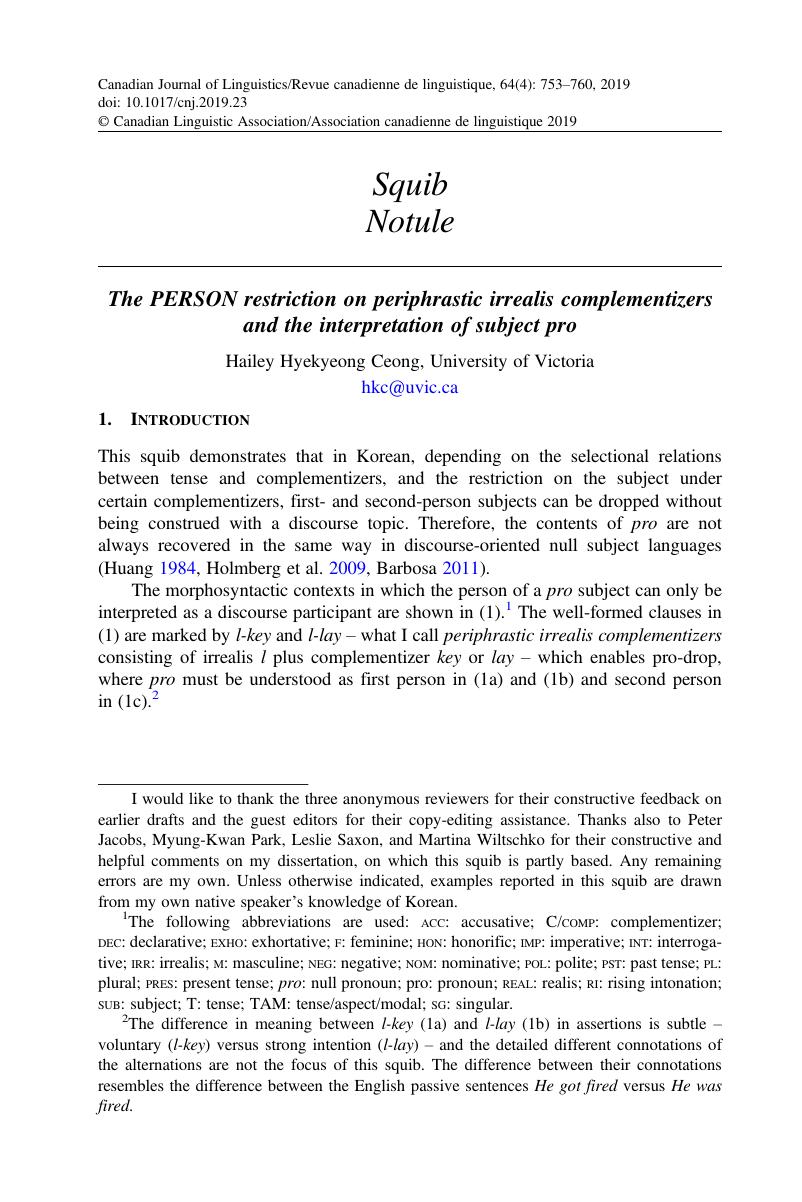No CrossRef data available.
Article contents
The PERSON restriction on periphrastic irrealis complementizers and the interpretation of subject pro
Published online by Cambridge University Press: 12 September 2019
Abstract

- Type
- Squib/Notule
- Information
- Canadian Journal of Linguistics/Revue canadienne de linguistique , Volume 64 , Issue 4 , December 2019 , pp. 753 - 760
- Copyright
- Copyright © Canadian Linguistic Association/Association canadienne de linguistique 2019
Footnotes
I would like to thank the three anonymous reviewers for their constructive feedback on earlier drafts and the guest editors for their copy-editing assistance. Thanks also to Peter Jacobs, Myung-Kwan Park, Leslie Saxon, and Martina Wiltschko for their constructive and helpful comments on my dissertation, on which this squib is partly based. Any remaining errors are my own. Unless otherwise indicated, examples reported in this squib are drawn from my own native speaker's knowledge of Korean.




